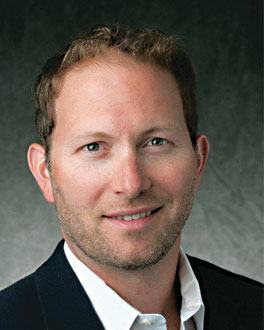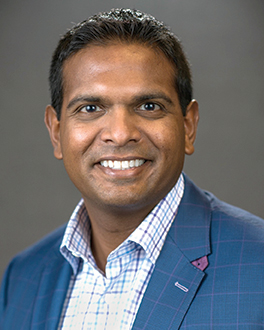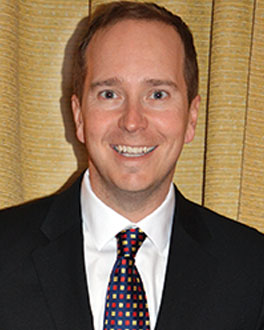The great unknown remains just that, as capital markets are adjusting
and assessing what long-term impacts the COVID-19 pandemic will have on
financing demand and the structure of loans and other funding
instruments for the long term and post-acute care (LT/PAC) sector.
Sources in the know say there is of course a lot of caution being
expressed on what lies ahead, but at the same time plenty of activity in
slices of the marketplace even now.
Demand for Capital
Headline news is focused on the tremendous challenges skilled
nursing facilities (SNFs) and assisted living communities are facing in
what is a once-in-a-lifetime threat from the pandemic, but Erik Howard,
executive managing director, healthcare finance, Capital Funding Group
(CFG), tells Provider that his company has seen brisk business in recent
times.

“We
had probably the best six months of bridge lending business we have
seen, and part of that comes from our continued support of the LT/PAC
industry; we have been doing this for 30 years,” he says. And, over that
period, there have been cycles of ups and downs, but nothing like the
pandemic to test one’s resolve, Howard says.
“It is interesting, but many other banks have taken to the
sidelines to sort of wait out the pandemic, taking what was a relatively
robust pool of lenders earlier this year and making it more challenging
for borrowers to find capital,” he notes. This has left companies like
CFG with a lot of demand for their financing services, and even though
he says there is a “bit of a capital crunch,” operators have kept
knocking on the door.
The bridge loans are mostly in the $10 to $15 million range, and a
lot of that variance is driven by location. The Northeast, Howard says,
typically has higher valuations per bed and a strong reimbursement
environment. Overall, CFG has a record financing tally of some $625
million in the first six months of 2020 of bridge financing, Housing and
Urban Development loans, and accounts receivable arrangements.
Operators Looking to Regroup
Some of the brisk business at CFG has been in so-called
recapitalization loans, where an owner/operator has an existing loan
with X lender but wants to move the loan to another lender. This, Howard
says, can be for a number of reasons.
“It could be that the lender is no longer interested in the LTC space, or the borrower is looking for cash,” he says.
As for acquisitions, the marketplace is most predominantly focused
on regional providers picking up smaller portfolios, as the larger
organizations continue to divest assets in LT/PAC.
“This has been the thesis for the last 12 to 24 months, with
operators getting out of states that are not core to their platform and
landlords moving away from relationships that are not core. We have seen
a confluence of that in the last year and year and a half,” Howard
explains.
With COVID-19, they believe there will be a noticeable increase in
“mom-and-pop” providers looking for the door, as he says, with the
pandemic “the straw that broke the camel’s back.”
Overall, the reaction to the pandemic by the federal government,
states, and support by industry advocates like the American Health Care
Association have offered lifelines to providers, especially during the
earliest stages of the virus spreading, Howard says.
“Through all of this we have remained bullish and expect that the
sector will persevere. The question is will it be over in three months,
six, 12, or 18? We at CFG are supportive as we have been for 30+ years
and think providers will get through this because they provide such an
integral part of the health care system,” he says,
“Now that SNFs have been thrust into the spotlight, hopefully a lot
of policymakers, and the American people, see these facilities and how
important they are,” Howard adds.
REIT Assesses the Markets

Vikas
Gupta, senior vice president, acquisitions and development, Omega
Healthcare Investors, says the publicly traded Real Estate Investment
Trust (REIT) has witnessed a definite change in the long term care space
due to the pandemic. The question is whether the change is temporary or
permanent.
“The need for skilled nursing facilities is still there, but the
operating models have changed as operators are adapting to the new world
of COVID-19,” he says. “Accordingly, deal volume has slowed down where
smaller deals are trading, but larger transactions are mostly on hold as
everyone waits to see how things pan out in the long run for the SNF
space.”
Matthew Gourmand, senior vice president of investor relations at
Omega Healthcare Investors, says the REIT continues to like the skilled
nursing space for many reasons. “Firstly, we know the industry and have
deep relationships with established, quality operators.”
He says the second reason is the skilled sector is a hands-on,
needs-based business, with very little opportunity for technological
disruption. “Thirdly, the demand for skilled nursing beds is only going
to increase in the coming years with the aging baby boomers.”
On the assisted living front, Gourmand said his company has been
quite selective as a new supply of beds has created occupancy and
pricing headwinds in many markets in recent years.
“In the United States, we have chosen to focus primarily on
development in more densely populated markets with higher barriers to
entry. We have also invested in the United Kingdom care home market,
which has similar qualities to the U.S. skilled nursing industry,” he
says.
 Pandemic Puts Operators to the Test
Pandemic Puts Operators to the Test
Overall, the challenges from the pandemic have a few key aspects,
Gupta says. “The major challenges fall with the operators where they are
learning how to adapt to the changes needed to deal with the andemic.
This involves new protocols at SNFs, including regularly testing
residents and staff, procuring proper PPE [personal protective
equipment], retaining staff, and creating a safe environment for
residents,” he says.
“From our perspective, we are regularly checking in with our
operators to understand how they are adapting, sharing best practices
from other operators, and asking how we can assist.”
Omega Healthcare Investors owns more than 950 health care
properties across 40 states within the United States, as well as in the
United Kingdom. About 850 of those are SNFs, with the majority of the
remaining facilities being assisted living communities in the United
States and care homes in the United Kingdom.
Reimbursement Also Challenged
From a different perspective, the accounting and reimbursement side
of the LT/PAC trade, Mueller Prost partner Tiffany Karlin says the
pandemic is causing a lot of concern among her firm’s clients given the
uncertainties.
“It is causing stress on our industry overall from the
reimbursement and billing perspective. Clients are asking how do we get
paid for some of this cost tied to COVID. What are the codes? We have to
educate and train them and have been doing this on a constant basis,”
she says.
It is up to 70 to 80 hours a week of updating information that
comes from every aspect of the business, such as changing PPE costs,
compliance issues tied to new regulations on infection control and
reporting, and, of course, this is all while providers are working to
maintain high-quality care for their residents, Karlin says.
The hope for all stakeholders is for some normalcy to return and
that the positive trends that were emerging before COVID-19 will be able
to come to bear.
As Gourmand says, the biggest nonpandemic trend is clearly the
increased growth in demand stemming from the aging of baby boomers.
“The average birthrate between 1941 and 1964 was about 50 percent
higher than the preceding period. This cohort is just starting to reach
the age where utilization of skilled nursing facilities materially
increases. This is likely to represent a 20-year tailwind of demand for
this industry,” he says.